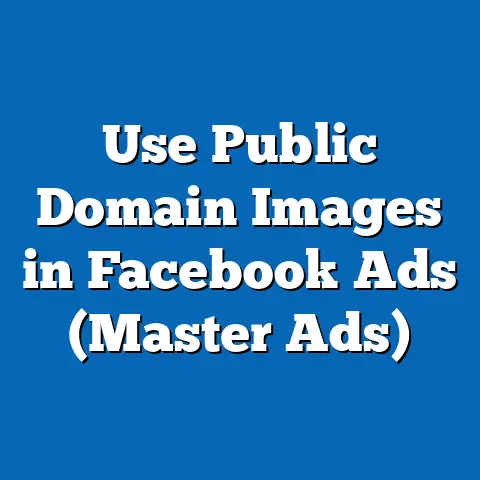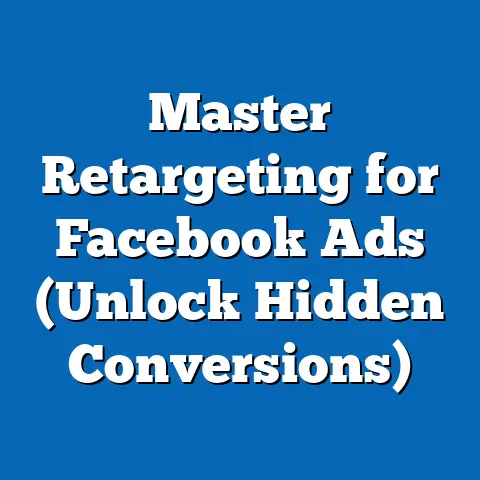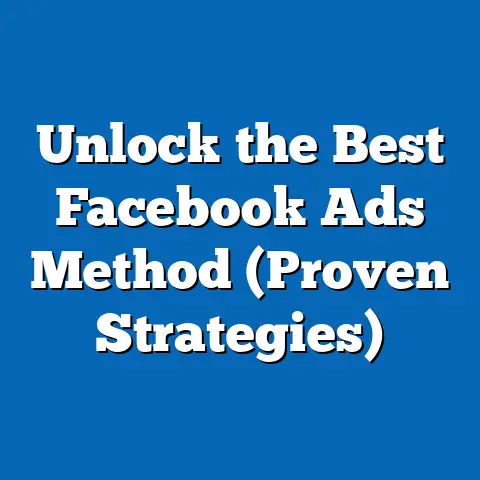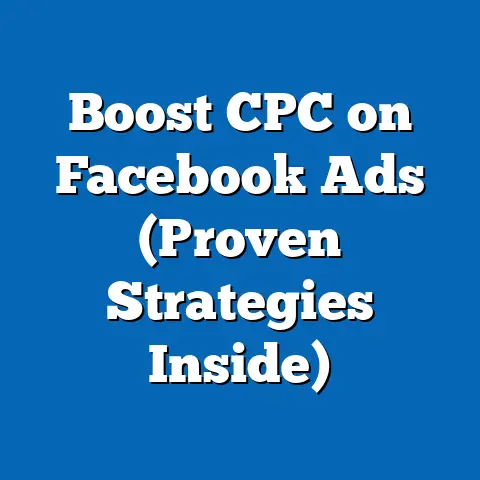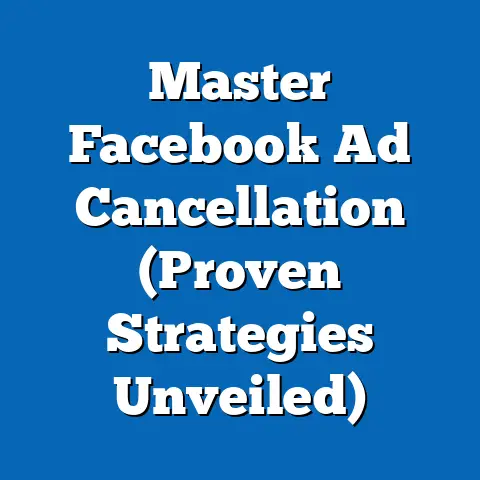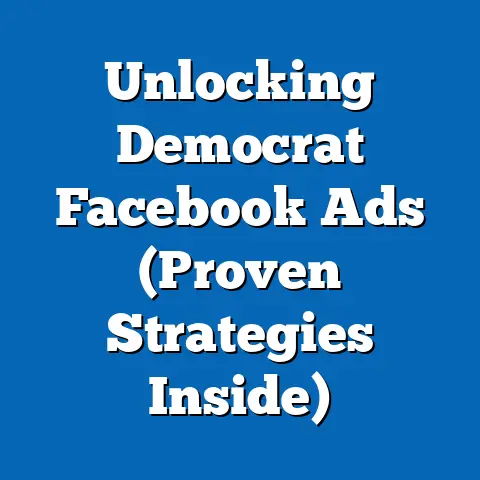Download Facebook: Unlock Social Success (Essential Guide)
I remember the first time I truly understood the power of Facebook. It wasn’t just about posting silly photos or status updates; it was about connection. I was traveling in Southeast Asia, feeling incredibly homesick, when I saw a Facebook post from my family back home celebrating my niece’s birthday. Suddenly, the distance didn’t feel so vast. That’s the magic of Facebook: it shrinks the world and brings us closer, no matter where we are. Today, Facebook remains a central hub of social interaction, a place where news breaks, trends ignite, and personal stories unfold. The ping of a new notification can spark excitement, a connection to a world of information and relationships.
This article isn’t just about how to download an app. It’s about how to unlock a world of social success, both personally and professionally, by leveraging the power of Facebook. Whether you’re looking to reconnect with old friends, build a thriving online community, or boost your business, this guide is your essential toolkit. Let’s dive in!
Why Facebook?
Historical Context
Facebook, initially known as “The Facebook,” was launched in February 2004 by Mark Zuckerberg and his college roommates at Harvard University. What started as a platform for connecting students quickly exploded into a global phenomenon. I remember when Facebook first became available to universities outside of Harvard. It was the must-have social network, and the exclusive nature of it only added to its allure.
Over the years, Facebook has evolved dramatically, adding features like the News Feed, photo and video sharing, Marketplace, and groups. It acquired Instagram in 2012 and WhatsApp in 2014, further solidifying its dominance in the social media landscape. The company even rebranded to Meta in 2021, signaling a shift towards the metaverse and virtual reality.
Today, Facebook boasts billions of active users, making it one of the most influential platforms in the world. Its journey from a college social network to a global communication tool is a testament to its ability to adapt and meet the ever-changing needs of its users.
User Demographics
One of Facebook’s greatest strengths is its diverse user base. According to Statista, as of early 2024, Facebook has nearly 3 billion monthly active users worldwide. This vast audience spans all age groups, locations, and interests.
-
Age: While younger generations might be drawn to newer platforms like TikTok and Instagram, Facebook still holds a significant presence among millennials and older generations. In fact, a large portion of Facebook users are between the ages of 25 and 49.
-
Location: Facebook’s reach is truly global, with users from virtually every country in the world. Emerging markets like India and Indonesia have seen particularly strong growth in recent years.
-
Interests: The platform’s algorithms are designed to cater to a wide range of interests, ensuring that users are exposed to content that is relevant and engaging. Whether you’re a sports enthusiast, a foodie, or a tech geek, you’ll find communities and content that resonate with you on Facebook.
Age: While younger generations might be drawn to newer platforms like TikTok and Instagram, Facebook still holds a significant presence among millennials and older generations. In fact, a large portion of Facebook users are between the ages of 25 and 49.
Location: Facebook’s reach is truly global, with users from virtually every country in the world. Emerging markets like India and Indonesia have seen particularly strong growth in recent years.
Interests: The platform’s algorithms are designed to cater to a wide range of interests, ensuring that users are exposed to content that is relevant and engaging. Whether you’re a sports enthusiast, a foodie, or a tech geek, you’ll find communities and content that resonate with you on Facebook.
Understanding these demographics is crucial, especially if you’re using Facebook for networking or marketing purposes. Knowing who your target audience is can help you tailor your content and messaging to maximize your impact.
Social Connection
Beyond the numbers and statistics, Facebook offers profound emotional and psychological benefits. It’s a place where people connect with loved ones, build communities, and find support.
I’ve seen firsthand how Facebook can strengthen relationships. I have family members who live in different countries, and Facebook is the primary way we stay in touch. We share photos, videos, and updates on our lives, keeping each other connected despite the distance.
Facebook also fosters a sense of community. There are countless groups dedicated to shared interests, hobbies, and causes. These groups provide a space for people to connect, share ideas, and support each other. I’m part of a gardening group on Facebook, and it’s been an invaluable resource for learning new techniques and getting advice from fellow gardeners.
Moreover, Facebook can be a source of support during challenging times. Many people turn to the platform to share their struggles and seek encouragement from their friends and family. This sense of connection and support can be incredibly powerful, especially when facing difficult situations.
Takeaway: Facebook’s rich history, diverse user base, and powerful social connection capabilities make it an essential platform for anyone looking to engage with the world around them. Whether you’re an individual looking to connect with friends and family or a business seeking to reach a wider audience, Facebook offers a wealth of opportunities.
Downloading Facebook
Step-by-Step Guide to Downloading
Downloading and setting up Facebook is a simple process, regardless of the device you’re using. Here’s a step-by-step guide for iOS, Android, and desktop:
iOS (iPhone/iPad):
- Open the App Store: Locate the App Store icon on your home screen (it looks like a blue icon with a white “A”).
- Search for Facebook: Tap the search bar at the bottom of the screen and type “Facebook.”
- Download the App: Find the official Facebook app in the search results (it should be the first one, with the Facebook logo). Tap the “Get” button next to the app.
- Install the App: If prompted, enter your Apple ID password or use Touch ID/Face ID to confirm the download. The app will begin downloading and installing on your device.
- Open Facebook: Once the installation is complete, tap the “Open” button to launch the app.
Android (Smartphones/Tablets):
- Open the Google Play Store: Find the Google Play Store icon on your home screen or in your app drawer (it looks like a triangle with different colors).
- Search for Facebook: Tap the search bar at the top of the screen and type “Facebook.”
- Download the App: Find the official Facebook app in the search results (it should be the first one, with the Facebook logo). Tap the “Install” button.
- Accept Permissions: The app will ask for certain permissions (e.g., access to your contacts, camera, etc.). Review these permissions and tap “Accept” to continue.
- Open Facebook: Once the installation is complete, tap the “Open” button to launch the app.
Desktop (Windows/Mac):
While there isn’t a dedicated Facebook desktop app in the same way as on mobile, you can access Facebook through your web browser:
- Open Your Web Browser: Launch your preferred web browser (e.g., Chrome, Safari, Firefox).
- Go to Facebook: Type “www.facebook.com” into the address bar and press Enter.
- Create an Account or Log In: If you don’t already have an account, click the “Create New Account” button and follow the on-screen instructions. If you have an account, enter your email address or phone number and password, then click “Log In.”
Tip: For desktop users, you can create a shortcut to Facebook on your desktop for quick access. In Chrome, for example, you can go to the Facebook website, click the three dots in the upper right corner, select “More tools,” and then “Create shortcut.”
Setting Up Your Profile
Your Facebook profile is your digital identity on the platform, so it’s important to make a good impression. Here are some tips for creating a compelling profile:
-
Profile Picture: Choose a clear, high-quality photo of yourself. It should be a photo that represents you well and is easily recognizable. Avoid using group photos or photos that are too small or blurry. I personally prefer using a headshot that reflects my professional persona.
-
Cover Photo: The cover photo is the large image at the top of your profile. Use it to showcase your interests, passions, or brand. You can use a photo of your travels, your hobbies, or even a graphic that promotes your business.
-
Bio: Your bio is a short description of yourself that appears under your name. Use it to highlight your key skills, interests, and accomplishments. Keep it concise and engaging. Think of it as your elevator pitch on Facebook.
-
About Section: The “About” section is where you can provide more detailed information about yourself, such as your education, work experience, and contact information. Fill out this section completely and accurately.
-
Privacy Settings: Facebook’s privacy settings allow you to control who can see your profile and your posts. Take the time to review these settings and adjust them to your comfort level. You can choose to make your profile public, visible to friends only, or visible to specific people.
Profile Picture: Choose a clear, high-quality photo of yourself. It should be a photo that represents you well and is easily recognizable. Avoid using group photos or photos that are too small or blurry. I personally prefer using a headshot that reflects my professional persona.
Cover Photo: The cover photo is the large image at the top of your profile. Use it to showcase your interests, passions, or brand. You can use a photo of your travels, your hobbies, or even a graphic that promotes your business.
Bio: Your bio is a short description of yourself that appears under your name. Use it to highlight your key skills, interests, and accomplishments. Keep it concise and engaging. Think of it as your elevator pitch on Facebook.
About Section: The “About” section is where you can provide more detailed information about yourself, such as your education, work experience, and contact information. Fill out this section completely and accurately.
Privacy Settings: Facebook’s privacy settings allow you to control who can see your profile and your posts. Take the time to review these settings and adjust them to your comfort level. You can choose to make your profile public, visible to friends only, or visible to specific people.
Navigating the Interface
The Facebook interface is relatively intuitive, but it’s helpful to understand the main features:
-
News Feed: The News Feed is the central hub of Facebook. It’s where you see updates from your friends, family, and the pages you follow. The algorithm determines which posts are shown in your News Feed based on your past interactions and interests.
-
Notifications: The Notifications tab (represented by a bell icon) alerts you to new activity on Facebook, such as friend requests, comments, likes, and shares.
-
Messaging: The Messaging feature allows you to communicate privately with your friends and contacts. You can send text messages, photos, videos, and files.
-
Groups: Facebook Groups are communities dedicated to shared interests. You can join groups to connect with like-minded people, share information, and participate in discussions.
-
Marketplace: The Marketplace is a platform for buying and selling items locally. You can browse listings, contact sellers, and arrange meetups.
News Feed: The News Feed is the central hub of Facebook. It’s where you see updates from your friends, family, and the pages you follow. The algorithm determines which posts are shown in your News Feed based on your past interactions and interests.
Notifications: The Notifications tab (represented by a bell icon) alerts you to new activity on Facebook, such as friend requests, comments, likes, and shares.
Messaging: The Messaging feature allows you to communicate privately with your friends and contacts. You can send text messages, photos, videos, and files.
Groups: Facebook Groups are communities dedicated to shared interests. You can join groups to connect with like-minded people, share information, and participate in discussions.
Marketplace: The Marketplace is a platform for buying and selling items locally. You can browse listings, contact sellers, and arrange meetups.
Takeaway: Downloading Facebook and setting up your profile is the first step to unlocking social success. By following these steps and tips, you can create a compelling online presence and start connecting with the world around you.
Maximizing Your Facebook Experience
Engagement Strategies
Once you’ve set up your profile and familiarized yourself with the interface, it’s time to start engaging with the platform. Here are some strategies for increasing your engagement on Facebook:
-
Post Regularly: Consistency is key. Aim to post regularly to keep your friends and followers engaged. However, avoid posting too frequently, as this can be overwhelming and lead people to unfollow you. I’ve found that posting once or twice a day is a good balance.
-
Use Multimedia Content: Visual content is more engaging than text alone. Incorporate photos, videos, and GIFs into your posts. Facebook’s algorithm tends to favor posts with visual content, so you’re more likely to reach a wider audience.
-
Ask Questions: Asking questions is a great way to spark conversation and encourage people to comment on your posts. Ask open-ended questions that invite thoughtful responses.
-
Respond to Comments: When people comment on your posts, take the time to respond. This shows that you’re engaged and that you value their input. It also encourages further interaction.
-
Share Relevant Content: Share articles, videos, and other content that you think your friends and followers will find interesting or valuable. This positions you as a knowledgeable and helpful resource.
-
Use Facebook Live: Facebook Live is a powerful tool for engaging with your audience in real-time. You can use it to host Q&A sessions, give behind-the-scenes tours, or simply chat with your followers.
Post Regularly: Consistency is key. Aim to post regularly to keep your friends and followers engaged. However, avoid posting too frequently, as this can be overwhelming and lead people to unfollow you. I’ve found that posting once or twice a day is a good balance.
Use Multimedia Content: Visual content is more engaging than text alone. Incorporate photos, videos, and GIFs into your posts. Facebook’s algorithm tends to favor posts with visual content, so you’re more likely to reach a wider audience.
Ask Questions: Asking questions is a great way to spark conversation and encourage people to comment on your posts. Ask open-ended questions that invite thoughtful responses.
Respond to Comments: When people comment on your posts, take the time to respond. This shows that you’re engaged and that you value their input. It also encourages further interaction.
Share Relevant Content: Share articles, videos, and other content that you think your friends and followers will find interesting or valuable. This positions you as a knowledgeable and helpful resource.
Use Facebook Live: Facebook Live is a powerful tool for engaging with your audience in real-time. You can use it to host Q&A sessions, give behind-the-scenes tours, or simply chat with your followers.
Building a Community
Creating and managing a Facebook Group or Page can be a great way to build a community around your personal or business interests. Here are some tips for building a thriving community on Facebook:
-
Choose a Niche: Focus on a specific topic or interest. This will help you attract a dedicated audience who are passionate about the same things as you.
-
Create Engaging Content: Share content that is relevant, informative, and entertaining. This will keep your members engaged and coming back for more.
-
Encourage Interaction: Foster a sense of community by encouraging members to share their thoughts, ideas, and experiences. Ask questions, start discussions, and create polls.
-
Moderate the Group: Set clear rules and guidelines for the group and enforce them consistently. This will help maintain a positive and productive environment.
-
Promote the Group: Share the group with your friends and followers on Facebook and other social media platforms. You can also use Facebook Ads to reach a wider audience.
Choose a Niche: Focus on a specific topic or interest. This will help you attract a dedicated audience who are passionate about the same things as you.
Create Engaging Content: Share content that is relevant, informative, and entertaining. This will keep your members engaged and coming back for more.
Encourage Interaction: Foster a sense of community by encouraging members to share their thoughts, ideas, and experiences. Ask questions, start discussions, and create polls.
Moderate the Group: Set clear rules and guidelines for the group and enforce them consistently. This will help maintain a positive and productive environment.
Promote the Group: Share the group with your friends and followers on Facebook and other social media platforms. You can also use Facebook Ads to reach a wider audience.
I’ve seen numerous Facebook Groups blossom into vibrant communities, offering support, advice, and a sense of belonging to their members. It’s a powerful way to connect with like-minded people and build meaningful relationships.
Utilizing Events and Networking
Facebook’s Events feature is a valuable tool for organizing gatherings, promoting events, and networking with people in your local community. Here’s how to leverage Events to enhance your social presence:
-
Create Events: Whether you’re hosting a birthday party, a book club meeting, or a business conference, create an event on Facebook to invite your friends and followers.
-
Promote Events: Share the event on your personal profile, in relevant groups, and on your business page. You can also use Facebook Ads to reach a wider audience.
-
Participate in Events: Attend events that align with your interests and passions. This is a great way to meet new people, network with professionals, and learn new things.
-
Network at Events: When you attend events, be proactive in meeting new people. Introduce yourself, ask questions, and exchange contact information.
-
Follow Up After Events: After attending an event, follow up with the people you met. Send them a friend request on Facebook, connect with them on LinkedIn, or send them a personalized email.
Create Events: Whether you’re hosting a birthday party, a book club meeting, or a business conference, create an event on Facebook to invite your friends and followers.
Promote Events: Share the event on your personal profile, in relevant groups, and on your business page. You can also use Facebook Ads to reach a wider audience.
Participate in Events: Attend events that align with your interests and passions. This is a great way to meet new people, network with professionals, and learn new things.
Network at Events: When you attend events, be proactive in meeting new people. Introduce yourself, ask questions, and exchange contact information.
Follow Up After Events: After attending an event, follow up with the people you met. Send them a friend request on Facebook, connect with them on LinkedIn, or send them a personalized email.
Takeaway: By implementing these engagement strategies, building a community, and utilizing Events, you can maximize your Facebook experience and unlock your social potential.
- Go to Facebook Pages: Log into your personal Facebook account and go to the Pages section (usually found in the left-hand menu).
- Create a New Page: Click the “Create New Page” button.
- Choose a Page Category: Select the appropriate category for your business (e.g., Local Business or Place, Company, Organization or Institution, Brand or Product, Artist, Band or Public Figure, Entertainment, Cause or Community).
- Enter Page Information: Provide the necessary information, such as your Page name, category, and description.
- Add a Profile Picture and Cover Photo: Upload a profile picture that represents your brand (usually your logo) and a cover photo that showcases your products or services.
- Add a Call-to-Action Button: Choose a call-to-action button that aligns with your business goals (e.g., “Book Now,” “Contact Us,” “Shop Now,” “Learn More”).
- Complete Your Page Information: Fill out all the sections of your Page, including your website, address, phone number, email address, and business hours.
- Create Your First Post: Share a post that introduces your business to your followers and explains what they can expect from your Page.
Essential elements to include for branding and customer engagement:
- Consistent Branding: Use the same colors, fonts, and imagery as your other marketing materials to maintain a consistent brand identity.
- Compelling Description: Write a clear and concise description of your business that highlights your unique value proposition.
- Customer Reviews: Encourage customers to leave reviews on your Page. Positive reviews can build trust and credibility.
- Engaging Content: Share content that is relevant, informative, and entertaining to keep your followers engaged.
- Responsive Customer Service: Respond promptly to customer inquiries and comments. This shows that you value your customers and are committed to providing excellent service.
Advertising on Facebook
Facebook Ads are a powerful tool for reaching a wider audience and driving specific business results. Here are the basics of Facebook Ads:
- Ad Objectives: Choose an ad objective that aligns with your business goals (e.g., Brand Awareness, Reach, Traffic, Engagement, Leads, App Installs, Video Views, Conversions).
- Targeting Options: Facebook offers a wide range of targeting options, including demographics, interests, behaviors, and custom audiences.
- Budget Settings: Set a daily or lifetime budget for your ad campaign. You can also choose between automatic and manual bidding.
- Ad Formats: Choose an ad format that is appropriate for your ad objective and target audience (e.g., Image Ads, Video Ads, Carousel Ads, Collection Ads).
- Ad Placement: Select where you want your ads to appear (e.g., Facebook News Feed, Instagram Feed, Audience Network).
The importance of analytics in measuring ad performance:
- Track Key Metrics: Monitor key metrics such as reach, impressions, clicks, click-through rate (CTR), cost per click (CPC), cost per mille (CPM), and conversion rate.
- Analyze Results: Analyze your ad performance to identify what’s working and what’s not.
- Optimize Campaigns: Based on your analysis, make adjustments to your targeting, budget, ad creative, and ad placement to improve your results.
I’ve seen businesses achieve remarkable results with Facebook Ads by carefully targeting their audience, creating compelling ad creative, and continuously optimizing their campaigns.
Success Stories
Countless businesses have successfully used Facebook to grow their brand and reach new audiences. Here are a few examples:
- A Local Restaurant: A local restaurant used Facebook Ads to promote its new menu and drive reservations. By targeting people who lived nearby and were interested in food and dining, they were able to increase their reservations by 30%.
- An E-commerce Store: An e-commerce store used Facebook Ads to promote its products to a wider audience. By targeting people who were interested in similar products, they were able to increase their sales by 25%.
- A Non-Profit Organization: A non-profit organization used Facebook Ads to raise awareness for its cause and solicit donations. By targeting people who were interested in social justice and charitable giving, they were able to increase their donations by 40%.
Takeaway: Facebook is a powerful platform for businesses of all sizes. By creating a Business Page, advertising on Facebook, and learning from success stories, you can leverage the platform to grow your brand and reach new customers.
Safety and Privacy on Facebook
Understanding Privacy Settings
Privacy is a growing concern in the digital age, and it’s important to understand how to protect your personal information on Facebook. Here’s a detailed overview of Facebook’s privacy settings:
- Who Can See Your Posts: Choose who can see your future posts (e.g., Public, Friends, Only Me, Custom).
- Who Can See Your Friend List: Choose who can see your friend list (e.g., Public, Friends, Only Me).
- Who Can Look You Up Using the Email Address or Phone Number You Provided: Choose who can look you up using your email address or phone number (e.g., Everyone, Friends of Friends, Friends).
- Do You Want Search Engines Outside of Facebook to Link to Your Profile? Choose whether you want search engines to link to your profile.
I always advise people to carefully review these settings and adjust them to their comfort level. Remember, you have the right to control who can see your information on Facebook.
Recognizing Scams and Misinformation
Unfortunately, Facebook is also a platform for scams and misinformation. Here are some common scams to be aware of:
- Phishing Scams: Scammers may try to trick you into providing your personal information by sending you fake emails or messages that look like they’re from Facebook.
- Lottery Scams: Scammers may claim that you’ve won a lottery or prize and ask you to pay a fee to claim your winnings.
- Romance Scams: Scammers may create fake profiles and try to build a romantic relationship with you in order to get you to send them money.
- Fake News: Scammers may spread fake news stories to influence your opinions or to trick you into clicking on malicious links.
If you encounter any suspicious activity on Facebook, report it to Facebook immediately. Here are some tips for staying safe on Facebook:
- Be Wary of Suspicious Links: Don’t click on links from unknown sources.
- Don’t Share Personal Information: Don’t share your personal information with people you don’t know.
- Verify Information: Before sharing information, verify that it’s accurate and from a reliable source.
- Report Suspicious Activity: If you encounter any suspicious activity, report it to Facebook immediately.
Mental Health Considerations
Social media can have a significant impact on mental health. It’s important to maintain a healthy relationship with Facebook and other social media platforms. Here are some tips:
- Limit Your Time on Facebook: Set a daily limit for your time on Facebook and stick to it.
- Be Mindful of What You Consume: Pay attention to the content you’re consuming on Facebook. If you find that certain content is making you feel anxious or depressed, unfollow those accounts.
- Focus on Real-Life Relationships: Don’t let Facebook replace your real-life relationships. Make time to connect with your friends and family in person.
- Take Breaks: Take regular breaks from Facebook to disconnect and recharge.
- Seek Professional Help: If you’re struggling with mental health issues, seek professional help.
Takeaway: By understanding privacy settings, recognizing scams and misinformation, and being mindful of mental health considerations, you can stay safe and healthy on Facebook.
Conclusion
We’ve covered a lot of ground in this guide, from the history and demographics of Facebook to the strategies for maximizing your experience and staying safe on the platform. We’ve explored how to download the app, set up a compelling profile, engage with others, and build a community. We’ve also discussed how businesses can leverage Facebook to grow their brand and reach new customers.
The key takeaways are:
- Facebook is a powerful platform for connecting with friends and family, building communities, and growing your business.
- It’s important to set up a compelling profile and engage with the platform in a meaningful way.
- Businesses can use Facebook to build brand awareness, engage with customers, and drive sales.
- It’s crucial to understand privacy settings, recognize scams and misinformation, and be mindful of mental health considerations.
Now, I encourage you to download the Facebook app, explore its features, and actively participate in your social networks. Whether you’re looking to reconnect with old friends, build a thriving online community, or boost your business, Facebook can be a powerful tool for personal and professional growth. Remember to use the platform responsibly, stay safe, and have fun! With the right approach, you can unlock your social success on Facebook. So, what are you waiting for? Dive in and start connecting with the world!

